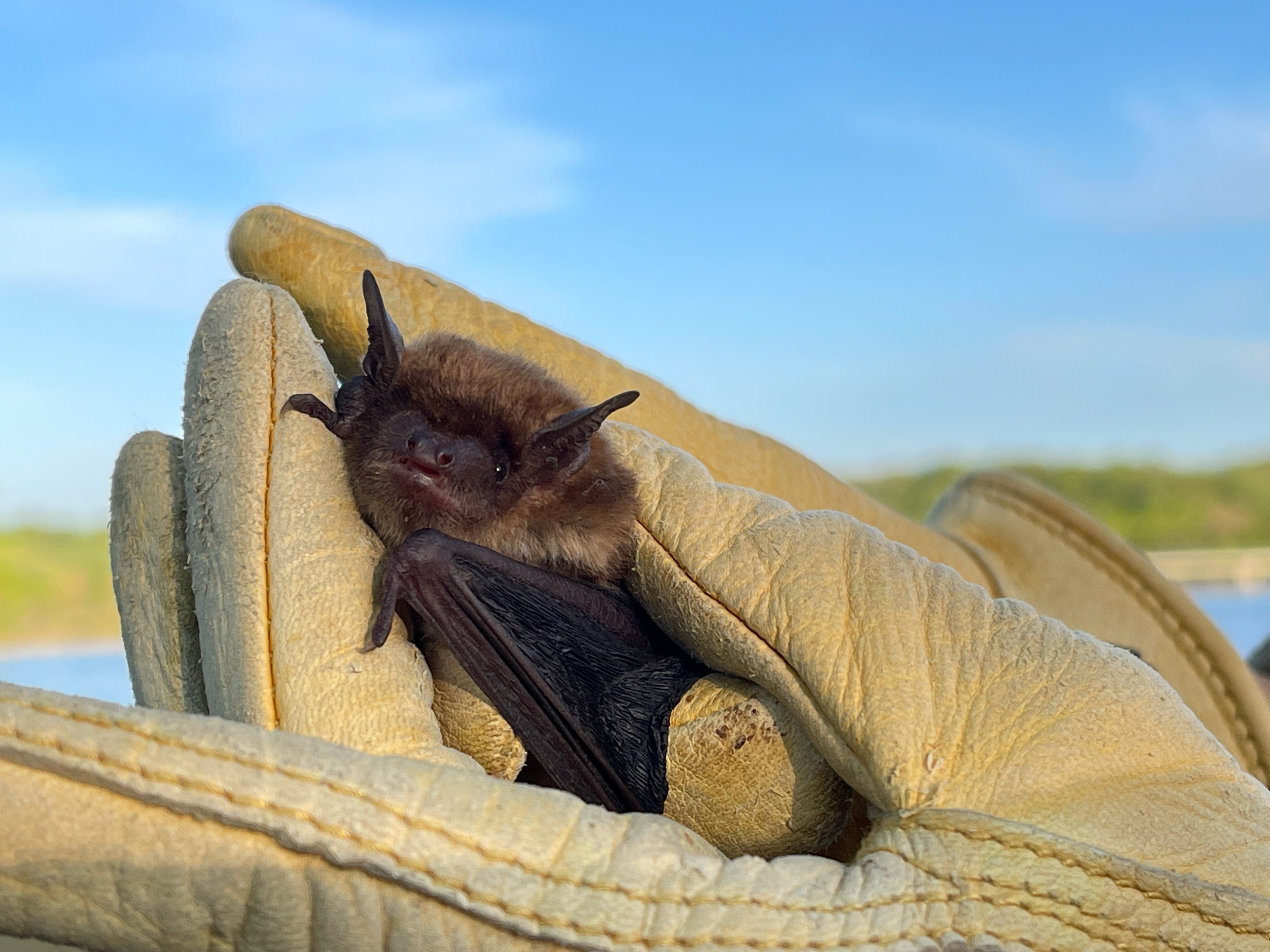



By Bryon Houlgrave
Published 5/13/2021
DES MOINES – As dusk descended on Gray’s Lake park in Des Moines, Kavya Parsa pulled a pair of fuzzy brown bats out of a plastic ice cream bucket and placed them onto the bark of a hearty cottonwood tree near the edge of the lake.
The bats, two of the 18 released back into the wild on Wednesday, May 12, 2021, sprang from the tree and took flight.
After a long year of helping care for the tiny mammals, Parsa, a lawyer and volunteer at the Iowa Wildlife Center in Ames, beamed with joy as the bats navigated their way into the darkening sky.
“Is your life fulfilled now?” asked Marlene Ehresman, co-founder and executive director of the Iowa Wildlife Center.
There is something fulfilling about releasing any rehabilitated animal back into the wild, but perhaps for Ehresman none so much as the 18 big brown bats released on Wednesday. Because of the COVID-19 pandemic, animal rehabilitation clinics were restricted from releasing any bats due to fear of reverse transmission.
Ehresman, who’s been rehabilitating bats for 25 years, said the Iowa Wildlife Center was taking care of about 120 bats last March when the pandemic hit.
“We got a mandate from the state that we couldn’t release any of the bats that we got in,” Ehresman said. She said that her team couldn’t do any work with bats in the field until research was done nationally to determine if the bats were vulnerable to COVID-19.
To accommodate its bat population, Kevin Cavallin, a volunteer at the Iowa Wildlife Center, said the center built makeshift dwellings using portable greenhouses to house them over the winter months.
“As you can imagine, it’s been a task taking care of two seasons’ worth of bats,” Cavallin said.
According to its website, a study by the U.S. Geological Survey concluded that the risk of passing SARS-CoV-2, the coronavirus that causes COVID-19, on to North American bats was low.
“In late fall, we were given the greenlight to release some of our 2019 bats,” Cavallin said. It was welcome news, as some of the bats had started reproducing in captivity, meaning even more bats to care for.
Big brown bats, the species of bat released at Gray’s Lake park on Wednesday, are termed crevice-dwelling bats and are the type typically found in homes, taking up residency where there is easy access to water and moderate temperatures.
“People find them where they shouldn’t be, or their cats find them or their dogs find them,” Ehresman said.
In Des Moines, Ehresman advises residents who find bats in their home to call the Des Moines Animal Control. She says that while the bats are protected outside, Iowa changed its law recently to allow the animals to be killed inside residences. But doing so, she believes, removes an important element of pest control. Bats eat mosquitos and other pest insects harmful to agriculture.
Once a bat has been removed, Ehresman stresses the importance of closing off openings into your home where they will get back in. And, rest assured, they will.
“Bats have really good homing instincts. If you’re not shutting up your homes, they’ll be back,” Ehresman said.
Copyright 2021/The Des Moines Register